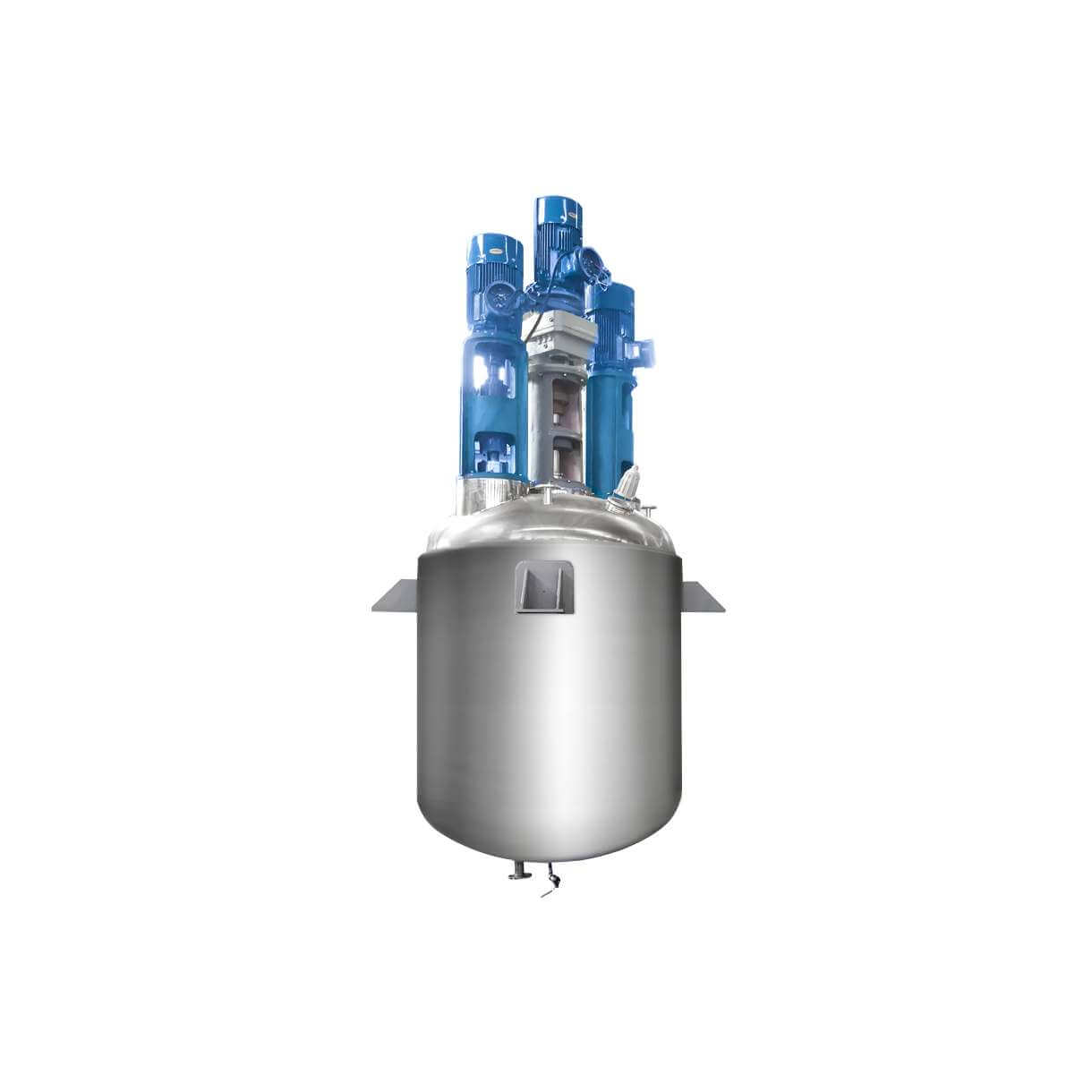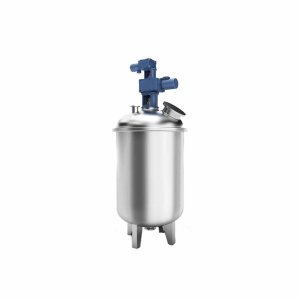- Mixing forms are mostly frame-type mixing, to ensure that the materials are evenly mixed in a short time; at the same time, frame type, anchor type, paddle type, etc. can be selected according to needs.
- The seal adopts a sanitary mechanical seal, which can ensure the pressure in the tank and prevent unnecessary pollution caused by leakage of materials in the tank;
- The interface adopts ISO standard quick-loading clamp type, which is convenient and hygienic;
- Sterile respirators, CIP cleaning nozzles, sight glasses, flanges, sanitary quick-opening manholes, etc.
Operating steps
1. The agitator of the reactor should be turned on before feeding. When there is no noise and it is normal, the material should be added to the reactor, and the amount of feeding should not exceed the process requirements.
2. Before opening the steam valve, first open the return valve, and then open the intake valve. The steam valve should be opened slowly to preheat the jacket and gradually increase the pressure, and the pressure in the jacket should not exceed the specified value.
3. The steam valve and cooling valve cannot be started at the same time, and hammering and collision are not allowed when the steam pipeline passes through the air.
4. When opening the cooling water valve, first open the return water valve, and then open the water inlet valve. The cooling water pressure shall not be lower than 0.1 MPa, nor higher than 0.2 MPa.
5. For the water ring vacuum pump, the pump should be turned on first, and then the water should be supplied. When the pump is stopped, the pump should be stopped first, and then the water should be stopped, and the accumulated water in the pump should be removed.
6. Check the operation of the reactor at any time, if any abnormality is found, it should be stopped for maintenance.
7. When cleaning the titanium epoxy (enamel) reactor, it is not allowed to brush the reactor with alkaline water and be careful not to damage the enamel.
Emergency situations
1. Stop stirring, cut off the power supply, and close various valves.
2. When shoveling the pot, the power supply of the mixer must be cut off, a warning sign must be hung, and a person should be set up to monitor it.
3. The stainless steel reactor must undergo regular technical inspection according to the requirements of the pressure vessel. If the inspection fails, it is not allowed to run.
Repair and maintenance
When using steam to heat the stainless steel reactor kettle, the refrigerant inlet valve must be closed, the remaining refrigerant in the pot and the jacket must be discharged, then the materials are put in, the agitator is turned on, the steam valve and the electric device are turned on. The valve is open. The heating power should be turned on. After reaching the desired temperature, the power should be turned off first. Turn on the steam valve and the electric heating power supply, and turn off the agitator after 2 to 3 minutes. After the treatment is completed, drain the remaining condensed water in the pot and the jacket, rinse it with warm water as soon as possible, brush off the sticky matter, and then thoroughly clean the inner wall of the container with 40°C to 50°C alkaline water, and rinse with clean water. Especially when there is no material (heat-absorbing medium) in the steam-heated stainless steel reactor, the steam valve and electric heating power supply must not be opened, and special attention should be paid to the use of steam pressure. Exceeding work pressure.
When maintaining the steam heating stainless steel reactor, you should always pay attention to the working condition of the entire equipment and reducer. If the lubricating oil of the reducer is insufficient, it should be replaced immediately. Electric heating medium oil should be replaced every six months. Worktables, distillation holes, electric heating rods, electrical instruments, etc. should be checked regularly. If there is a fault, it should be replaced or repaired immediately. When the equipment is not in use, be sure to thoroughly wash the inner and outer walls of the container with warm water, and frequently scrub the pot body to keep the outer surface and inner tank clean. Bright and durable.
Steam heating stainless steel reactor is an indispensable anti-corrosion equipment in the chemical industry. Factors such as mechanical collisions and temperature mutations during use often cause damage to the enamel, cracks, air bubbles, and pores. These defects are not allowed in enamel equipment. Once this happens, it must be repaired. The on-site repair agent for polymer composite materials is a two-component composite material with polymer, alloy steel powder, or wear-resistant ceramic powder as the matrix material and curing agent. Compared with ordinary resin-based repair agents, polymer composite materials rely on their own finer polymer structure, so that the material itself has stronger adhesion and excellent corrosion resistance, and the polymer can even penetrate the metal to form a dense structure. A polymer composite protective layer is formed. Repair process: surface cleaning→rust removal→absolute alcohol cleaning→Fuji blue bottom repair agent→Fuji blue surface repair agent→curing→use.

-24.jpg)

-24-1-300x300.jpg)


